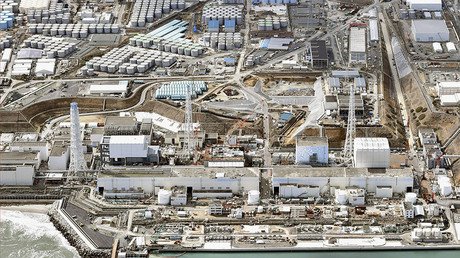Wild radioactive Fukushima boars breed like rabbits, ravage local countryside

Northern Japan is raising an alarm, as the area surrounding the Fukushima Nuclear disaster zone has been overwhelmed by radioactive wild boars, whose population has increased dramatically over the past 4 years, as they breed freely in the exclusion zone.
With the number of animals steadily growing, the boar population has been devastating the crops of farms in the area. Since the nuclear disaster of 2011, damage to agriculture caused by boars in the Fukushima prefecture has doubled, amounting to some $15 million, according to a report from The Times. Boars also pose a threat to public safety, as reports of rampaging wild beast injuring local residents while roaming the streets have become more frequent over the past few years.
@AlishaRai There was a wild boar loose near the JHS I taught at in Japan. Teachers escorted kids home wielding umbrellas. It was nuts.
— Jemma Prophet (@jemmaprophet) March 24, 2016
As boars do not have any natural predators to keep their population in check, local governments all over Japan have been organizing big hunting parties to decrease the population. In the three years prior to 2014, the number of boars killed increased more than four times, from 3,000 to 13,000. As reported by Yomiuri news outlet, the government in Fukushima has been offering rewards to hunters in order to “inspire” them to cull the boars. Despite the effort, however, the effect has been limited, as the animals reproduce quickly.
Scientists from the Fukushima University Environmental Radioactivity Institute, who have been researching the spread of radioactive materials in the disaster area, have been looking into the reasons for the explosion in the boar population. “Wild boar along with raccoon have been taking advantage of the evacuation zone, entering vacant houses in areas damaged by the [disaster], and using them as breeding places or burrows,” assistant ecology professor Okuda Keitokunin said, as quoted by the Japanese Mainichi newspaper in March.
Radioactive boars in Fukushima reminds me of this from 2 yrs back –
— Naren Balaji (@narenbalaji) April 5, 2016
Radioactive boars in Germany, due to Chernobyl https://t.co/5Vf3LmPFjH
Adding to the problem is the fact that local cities have been running out of burial space for boars. In the city of Nihonmatsu, some 56 kilometers from the Fukushima plant, three mass graves large enough to hold 600 boars each are reportedly almost full, with the local government saying it has run out of spare land. Local hunters have even been reduced to burying the corpses on their own premises.
Authorities have also been burning boar corpses in municipal incinerators, but the task of cutting up animals weighing 100 kilograms each to get them into the furnace is not a dream job, and there is a shortage of personnel capable of performing the task.
Despite boar meat being considered a delicacy in northern Japan, the meat of wild boars from Fukushima area is not suitable for human consumption because it contains high concentrations of radioactive substances. Normally one of the healthiest red meats, very high in protein, Fukushima’s wild boars have become quite the opposite of “healthy nutrition,” as they normally eat roots, nuts, berries and smaller animals from the forest floor, which is where the highest levels of radioactive fallout, typically washed down by the rain, is concentrated. The radioactive element caesium-137 has been reportedly discovered in animals from the area at levels 300 times higher than the regulatory standard for human consumption. Local authorities have been issuing warnings to residents asking them to refrain from eating boar meat.
One boar down. Hunting season in Japan <3 pic.twitter.com/5lbZEpQEQd
— キタヤマトガンサービス (@KitayamatoG) November 22, 2015
There is no evidence so far that the health of the boars has been affected by exposure to radiation, but studies have found evidence of damage in smaller animals, like rats, as well as plants. In high radiation areas, DNA damage has also been discovered in earthworms, and growth mutations have been identified in fir trees, the Times reports.
To date, no evidence has emerged of genetic damage in humans exposed to the radiation in Fukushima. A study by Stanford University in California concluded that about 130 people may die as a result of cancers caused by the disaster, which is considered to be a rather low number given the size of the population affected.
Meanwhile, Japan has given the green light to the construction of an underground ice wall system to surround the Fukushima plant, which has been designed as a barrier to prevent contamination of the groundwater beneath the crippled nuclear facility.
Japan’s Nuclear Regulation Authority (NRA) announced that they had ordered the first sections of the system to be switched on. The giant underground refrigerating system will erect and maintain a barrier of frozen soil around the plant.
The disaster at Fukushima-Daichi Nuclear Plant was caused by a tsunami that resulted in the meltdown of three nuclear reactors and a release of radioactive material. It was the largest nuclear disaster since the Chernobyl tragedy of 1986, and the second to receive the highest level classification in the International Nuclear Event Scale.













